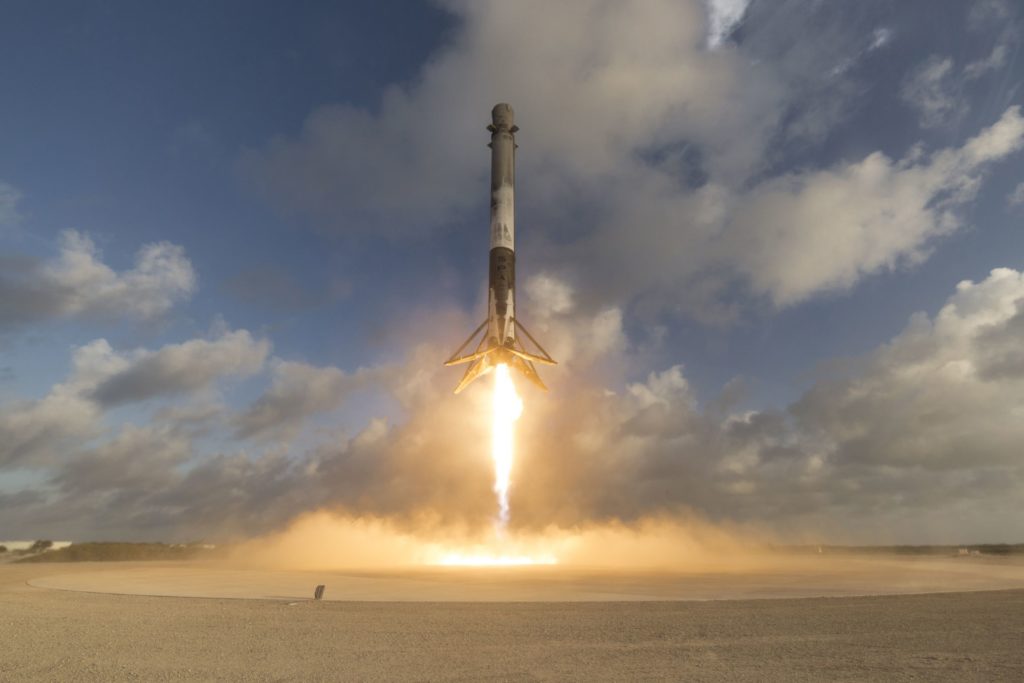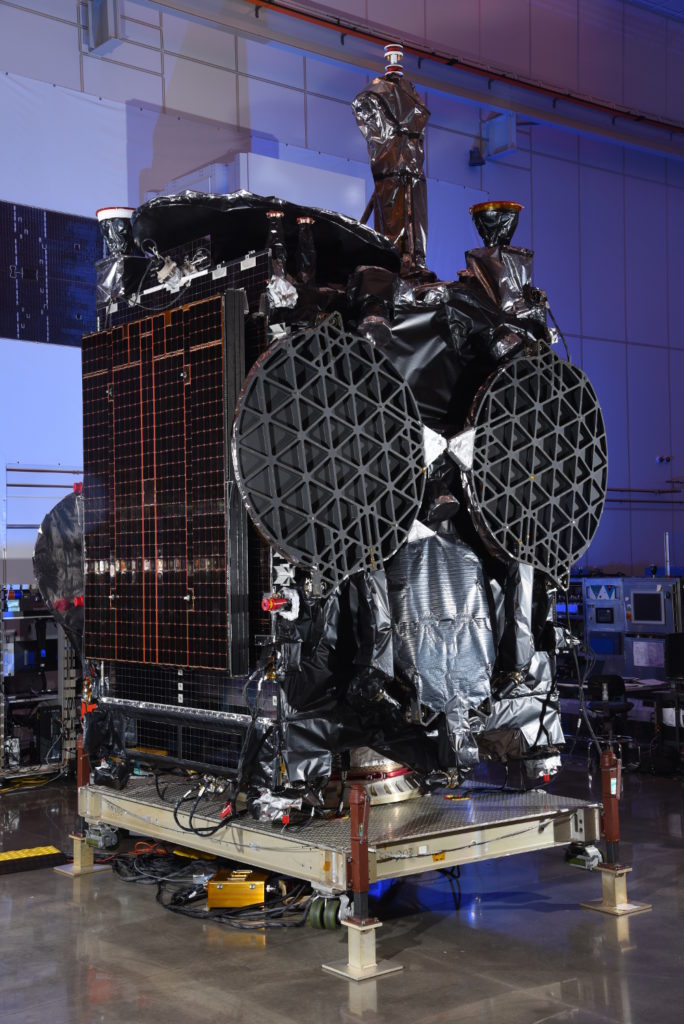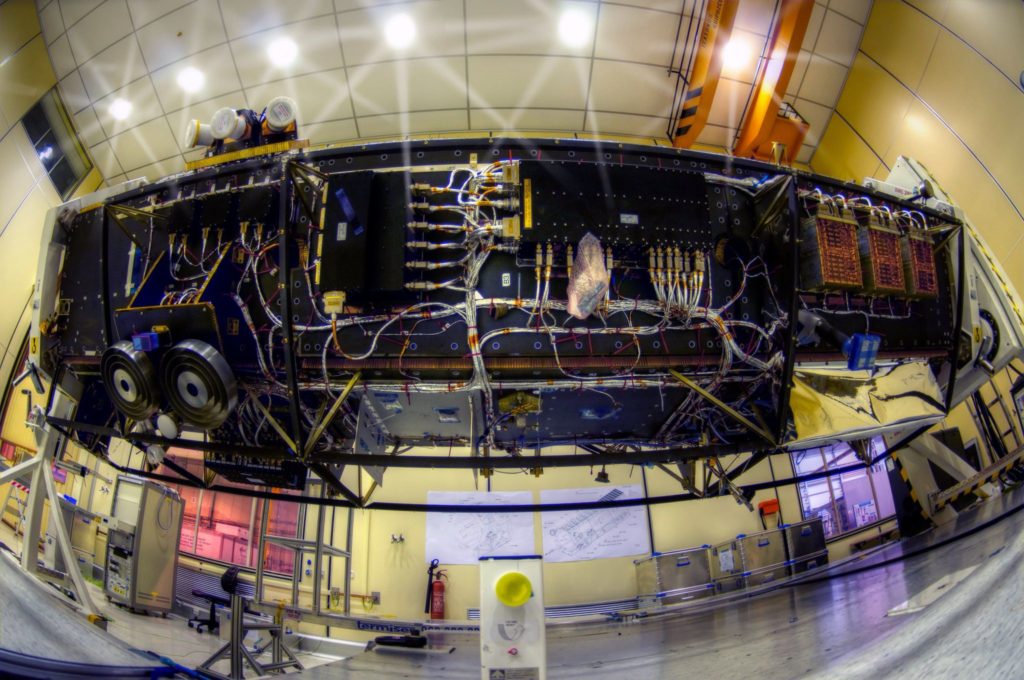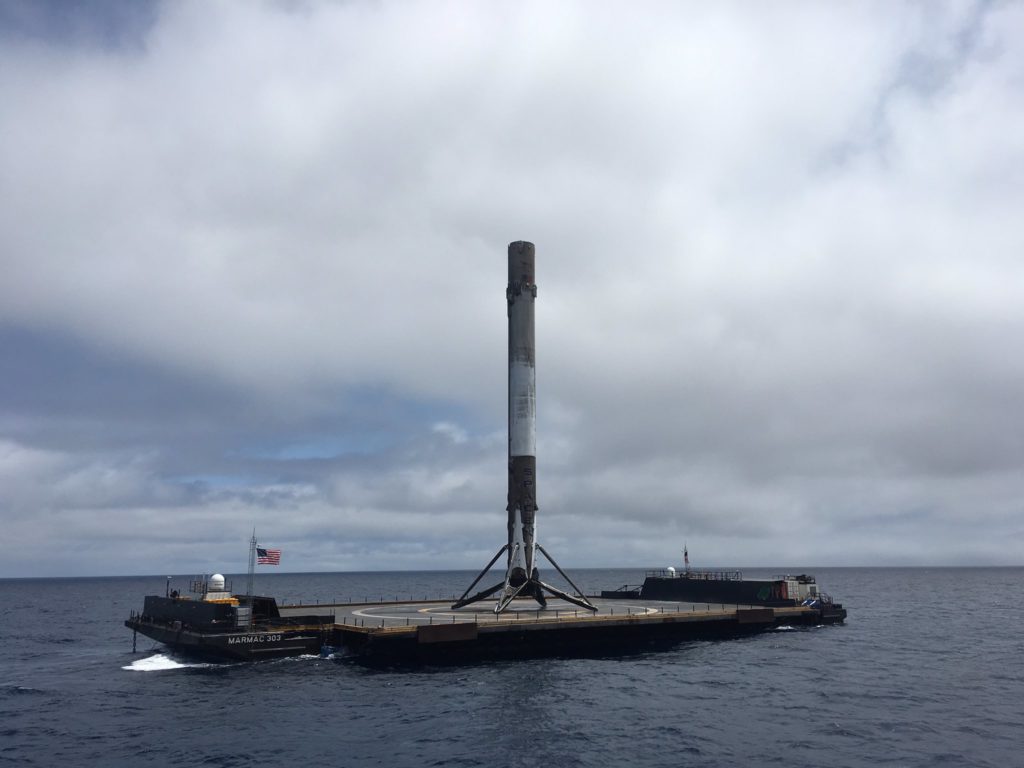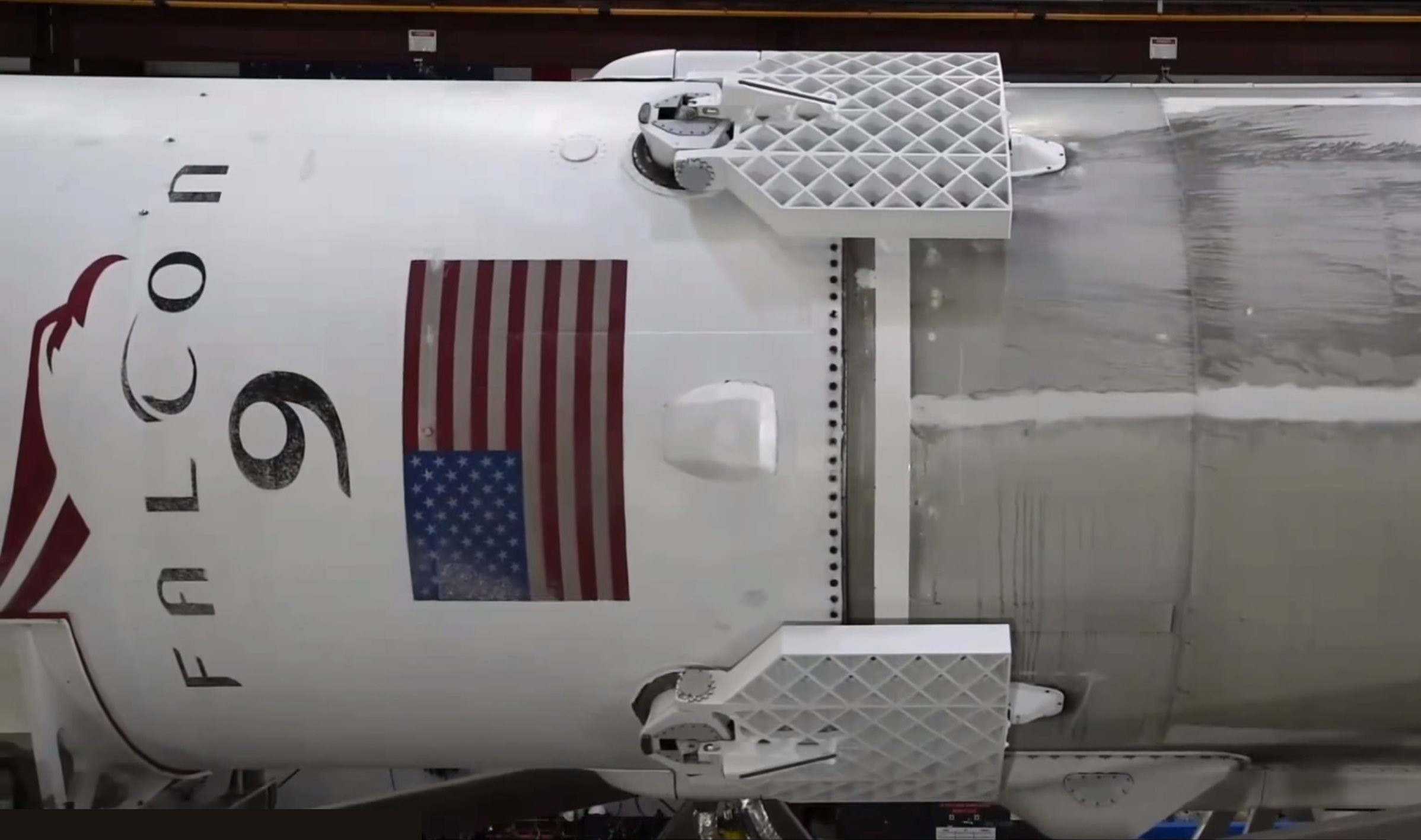
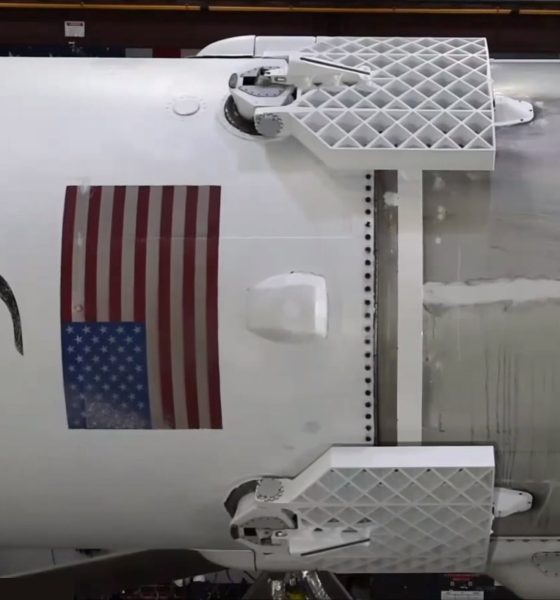
News
SpaceX on track to launch four rockets next month despite Falcon Heavy delays
Despite the intense focus on SpaceX’s first Falcon Heavy launch attempt and the testing preceding it, SpaceX is still a functioning business, and that business lies in launching payloads into Earth orbit. While it appears that January is unlikely to see any additional SpaceX launches, particularly Falcon Heavy, the launch company’s February manifest appears to be rapidly firming up.
Perhaps most significantly, two geostationary communications satellites completed their long journeys to Cape Canaveral, Florida within the last week or so, and a third payload on the West Coast is presumed to be at Vandenberg Air Force Base, all preparing for February launches. Meanwhile, although it is unclear how close Falcon Heavy is to launching, a date in mid to late February appears realistic at this point. As such, SpaceX has at least three and maybe four missions concretely planned for February – concrete in the sense that three of them were given specific launch dates within the last week.
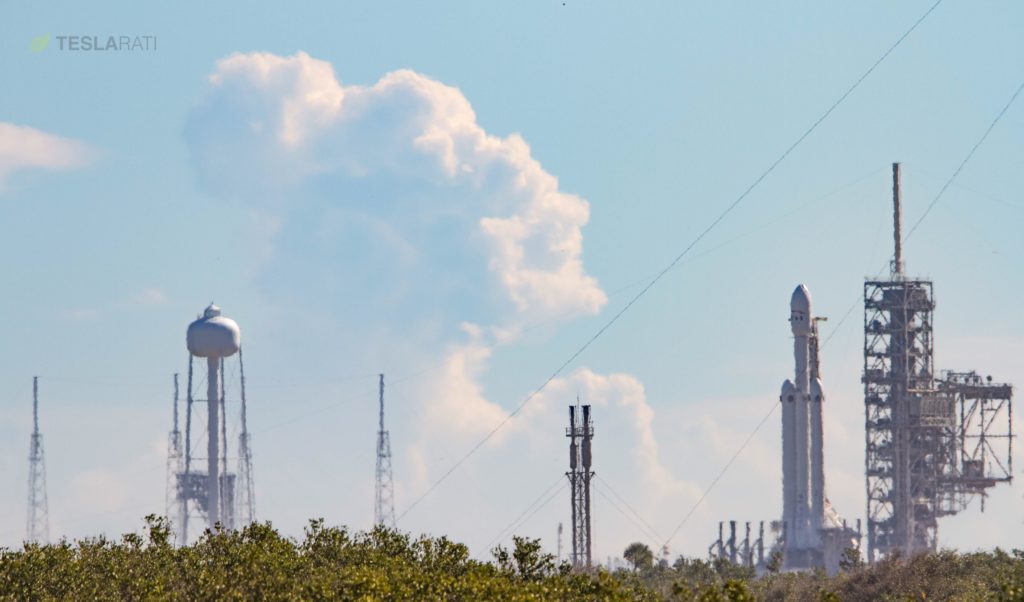
Falcon Heavy is now targeting Friday, January 19 for its first static fire test. (Tom Cross/Teslarati)
A return to stride
Following a halcyon year of 18 launches, SpaceX appears to be ready to tackle its manifest headfirst after a relatively relaxed start to 2018. January saw a single SpaceX launch, Zuma, as well as the ongoing series of tests of the first completed Falcon Heavy launch vehicle, although the big rocket’s launch date has likely already slipped into February at the earliest. Still, SpaceX’s Falcon 9 workhorse rocket is rearing for additional launches, and options abound.
GovSat-1 (SES-16) – NET late January 2018
First on the docket is the launch of GovSat-1/SES-16, a public-private partnership between Luxembourg’s government and the renowned Lux.-based satellite manufacturer and operator, SES. Similar to Hispasat, GovSat-1 is a geostationary communications satellite weighing around 4000 kg that will be placed in a geostationary transfer orbit by Falcon 9. If it flies before Falcon Heavy, something I’d place at around 99% likely, the launch of PAZ will mark SpaceX’s first reused flight of 2018, with many, many more to come. This particular launch will use Core 1032 from the secretive NROL-76 mission back in May 2017. 1032 is an older booster, and thus a recovery attempt is unlikely – Block 3 Falcon 9s were never designed to be reused more than once or twice, especially not after toasty high-energy recoveries necessitated by geostationary launches.
- After launching NROL-76 in May 2017, B1032 returned to Landing Zone-1 for a successful landing. (SpaceX)
- SES and GovSats’ first partnered satellite, GovSat-1/SES-16. (SES)
PAZ – Starlink prototype co-passengers – NET February 10 2018, 6:52am PST
Up next, PAZ is a commercial imaging satellite designed to return high-resolution photos of Earth from a relatively low polar orbit of approximately 500 km. It’s believed that this mission will be launched aboard a flight-proven Falcon 9 booster, Core 1038, previously tasked with the launch of the small Formosat-5 imaging satellite in August 2017. The mission will be the second 2018 launch of a flight proven booster for SpaceX, following on the heels of GovSat-1. Perhaps more important than reuse (but secondary to the customer’s payload insertion), however, is the probable presence of two of SpaceX’s first prototype broadband satellites, a constellation now known to be called Starlink.
This will be a major achievement for SpaceX’s satellite constellation efforts, as the several hundred employees SpaceX has stationed in Washington State and outside of Hawthorne, CA will finally be able to operationally test the fruit of many months of hard but silent work. Given the presence of two satellites, it’s assumed that these test satellites, Microsat 2A and 2B, have been designed to test all of the main components SpaceX has been developing, particularly the optical (LASER) on orbit communications system. By allowing each satellite to communicate at incredibly high bandwidths with each other, SpaceX’s ultimate goal is to create a mesh network of connectivity covering the entire Earth.
As such, fingers crossed that SpaceX begins to discuss Starlink in more detail as 2018 progresses and PAZ and its Microsat co-passengers reach orbit in February. Sadly, although the combined payload is small and the planned orbit low, the twice-flight-proven booster may meet its ultimate fate in the Pacific Ocean – a recovery attempt is no longer guaranteed for older, reused Falcon 9s. However, while not officially confirmed, this launch could see the debut of SpaceX’s Western landing pad, currently known as SLC-4 West (SLC-4W). Rather than attempting recovery aboard the drone ship Just Read The Instructions, Falcon 9 1038 would instead flip around and return to a landing area less than a kilometer away from its VAFB launch pad. Expect official confirmation as the launch date approaches.
- The Spanish company Hisdesat’s PAZ imaging satellite. (Hisdesat)
- Falcon 9 1038 aboard Just Read The Instructions after the launch of Formosat-5. (SpaceX)
Hispasat 30W-6 (1F) – No Earlier Than (NET) mid-February 2018
Finally, Hispasat is a relatively hefty 6000 kg commercial communications satellite slated for launch aboard what is believed to be a new Falcon 9 rocket. With SpaceX aiming to place the satellite into a geostationary transfer orbit, this will almost certainly preclude any attempts at recovering the first stage – the booster will need to expend most of its fuel to accomplish the job, leaving no reserve to conduct landing burns at sea. Hispasat’s Falcon 9 will thus likely be the first new booster to be expended intentionally by SpaceX in 2018.
Spain's @Hispasat: 30W-6 telecom sat arrives at Cape Canaveral from builder @sslmda to prepare for Feb launch on @SpaceX Falcon 9. Sat carries Ku-, C- & Ka-band payload for Americas/trans-Atlantic. pic.twitter.com/Zfhi1cE5vx
— Peter B. de Selding (@pbdes) January 16, 2018
Another busy year?
If February is to be representative of SpaceX’s 2018 launch cadence, the year is going to be a crazy one for the rocket company. As of IAC 2017, Elon Musk showed an estimated 30 launches as the company’s goal this year, compared to 20 in 2017 (SpaceX was only two launches short of that). While Falcon Heavy may be understandably stealing the buzz and then some from those interested in spaceflight and technology, it is an absolute necessity that SpaceX remains a viable and reliable launch company if they hope to pursue more aspirational technologies like Falcon Heavy, BFR, and more. Here’s to hoping that SpaceX manages to make 2018 equally or even more successful than 2017.
Follow along live as launch photographer Tom Cross and I cover these exciting proceedings as close to live as possible.
Teslarati – Instagram – Twitter
Tom Cross – Instagram
Eric Ralph – Twitter

Elon Musk
Elon Musk and Tesla try to save legacy automakers from Déjà vu
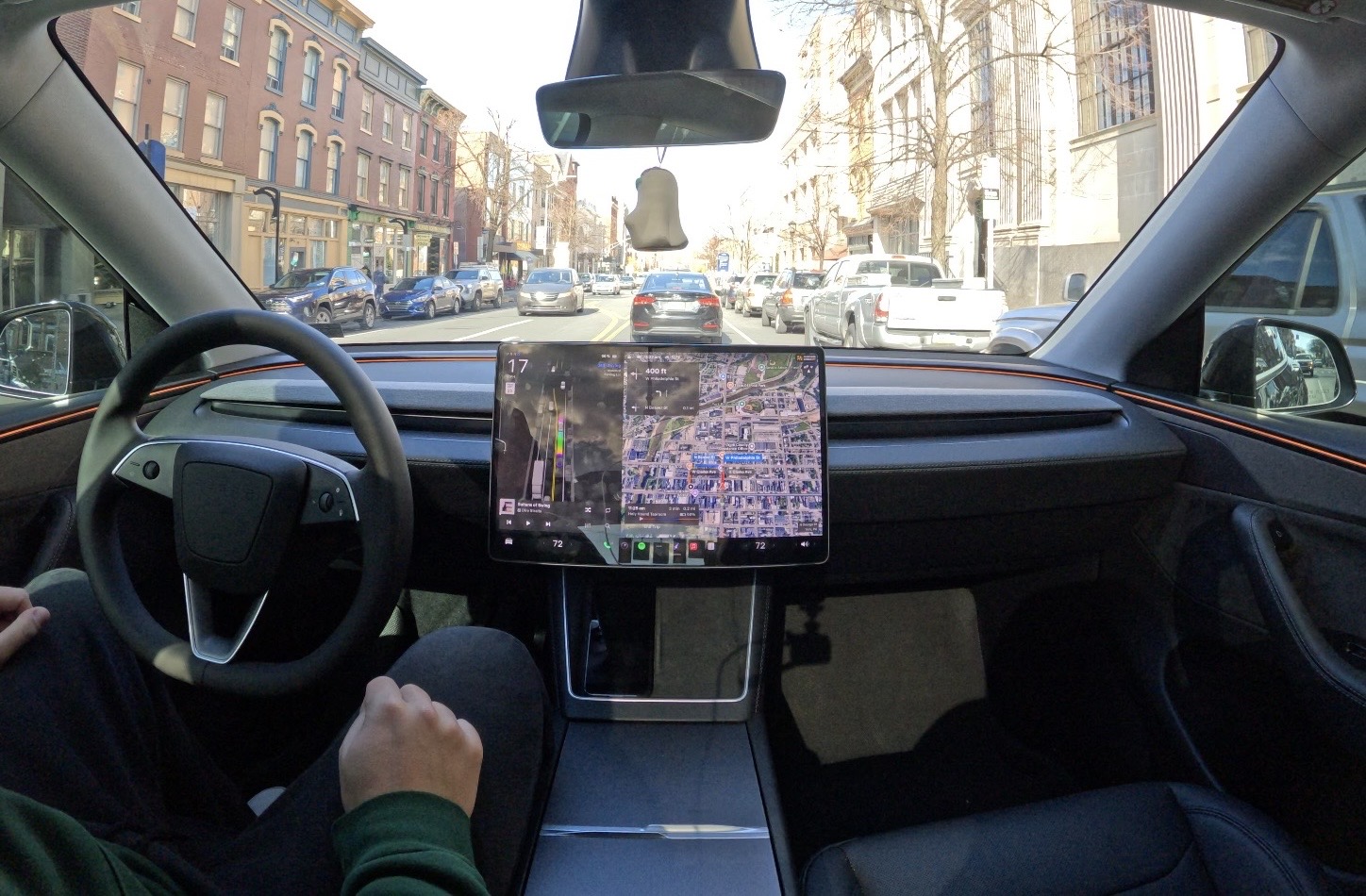
Elon Musk said in late November that he’s “tried to warn” legacy automakers and “even offered to license Tesla Full Self-Driving, but they don’t want it,” expressing frustration with companies that refuse to adopt the company’s suite, which will eventually be autonomous.
Tesla has long established itself as the leader in self-driving technology, especially in the United States. Although there are formidable competitors, Tesla’s FSD suite is the most robust and is not limited to certain areas or roadways. It operates anywhere and everywhere.
The company’s current position as the leader in self-driving tech is being ignored by legacy automakers, a parallel to what Tesla’s position was with EV development over a decade ago, which was also ignored by competitors.
The reluctance mirrors how legacy automakers initially dismissed EVs, only to scramble in catch-up mode years later–a pattern that highlights their historical underestimation of disruptive innovations from Tesla.
Elon Musk’s Self-Driving Licensing Attempts
Musk and Tesla have tried to push Full Self-Driving to other car companies, with no true suitors, despite ongoing conversations for years. Tesla’s FSD is aiming to become more robust through comprehensive data collection and a larger fleet, something the company has tried to establish through a subscription program, free trials, and other strategies.
Tesla CEO Elon Musk sends rivals dire warning about Full Self-Driving
However, competing companies have not wanted to license FSD for a handful of speculative reasons: competitive pride, regulatory concerns, high costs, or preference for in-house development.
Déjà vu All Over Again
Tesla tried to portray the importance of EVs long ago, as in the 2010s, executives from companies like Ford and GM downplayed the importance of sustainable powertrains as niche or unprofitable.
Musk once said in a 2014 interview that rivals woke up to electric powertrains when the Model S started to disrupt things and gained some market share. Things got really serious upon the launch of the Model 3 in 2017, as a mass-market vehicle was what Tesla was missing from its lineup.
This caused legacy companies to truly wake up; they were losing market share to Tesla’s new and exciting tech that offered less maintenance, a fresh take on passenger auto, and other advantages. They were late to the party, and although they have all launched vehicles of their own, they still lag in two major areas: sales and infrastructure, leaning on Tesla for the latter.
I’ve tried to warn them and even offered to license Tesla FSD, but they don’t want it! Crazy …
When legacy auto does occasionally reach out, they tepidly discuss implementing FSD for a tiny program in 5 years with unworkable requirements for Tesla, so pointless. 🤷♂️
🦕 🦕
— Elon Musk (@elonmusk) November 24, 2025
Musk’s past warnings have been plentiful. In 2017, he responded to critics who stated Tesla was chasing subsidies. He responded, “Few people know that we started Tesla when GM forcibly recalled all electric cars from customers in 2003 and then crushed them in a junkyard,” adding that “they would be doing nothing” on EVs without Tesla’s efforts.
Companies laughed off Tesla’s prowess with EVs, only to realize they had made a grave mistake later on.
It looks to be happening once again.
A Pattern of Underestimation
Both EVs and self-driving tech represent major paradigm shifts that legacy players view as threats to their established business models; it’s hard to change. However, these early push-aways from new tech only result in reactive strategies later on, usually resulting in what pains they are facing now.
Ford is scaling back its EV efforts, and GM’s projects are hurting. Although they both have in-house self-driving projects, they are falling well behind the progress of Tesla and even other competitors.
It is getting to a point where short-term risk will become a long-term setback, and they may have to rely on a company to pull them out of a tough situation later on, just as it did with Tesla and EV charging infrastructure.
Tesla has continued to innovate, while legacy automakers have lagged behind, and it has cost them dearly.
Implications and Future Outlook
Moving forward, Tesla’s progress will continue to accelerate, while a dismissive attitude by other companies will continue to penalize them, especially as time goes on. Falling further behind in self-driving could eventually lead to market share erosion, as autonomy could be a crucial part of vehicle marketing within the next few years.
Eventually, companies could be forced into joint partnerships as economic pressures mount. Some companies did this with EVs, but it has not resulted in very much.
Self-driving efforts are not only a strength for companies themselves, but they also contribute to other things, like affordability and safety.
Tesla has exhibited data that specifically shows its self-driving tech is safer than human drivers, most recently by a considerable margin. This would help with eliminating accidents and making roads safer.
Tesla’s new Safety Report shows Autopilot is nine times safer than humans
Additionally, competition in the market is a good thing, as it drives costs down and helps innovation continue on an upward trend.
Conclusion
The parallels are unmistakable: a decade ago, legacy automakers laughed off electric vehicles as toys for tree-huggers, crushed their own EV programs, and bet everything on the internal-combustion status quo–only to watch Tesla redefine the industry while they scrambled for billions in catch-up capital.
Today, the same companies are turning down repeated offers to license Tesla’s Full Self-Driving technology, insisting they can build better autonomy in-house, even as their own programs stumble through recalls, layoffs, and missed milestones. History is not merely rhyming; it is repeating almost note-for-note.
Elon Musk has spent twenty years warning that the auto industry’s bureaucratic inertia and short-term thinking will leave it stranded on the wrong side of technological revolutions. The question is no longer whether Tesla is ahead–it is whether the giants of Detroit, Stuttgart, and Toyota will finally listen before the next wave leaves them watching another leader pull away in the rear-view mirror.
This time, the stakes are not just market share; they are the very definition of what a car will be in the decades ahead.
News
Waymo driverless taxi drives directly into active LAPD standoff
No injuries occurred, and the passengers inside the vehicle were safely transported to their destination, as per a Waymo representative.
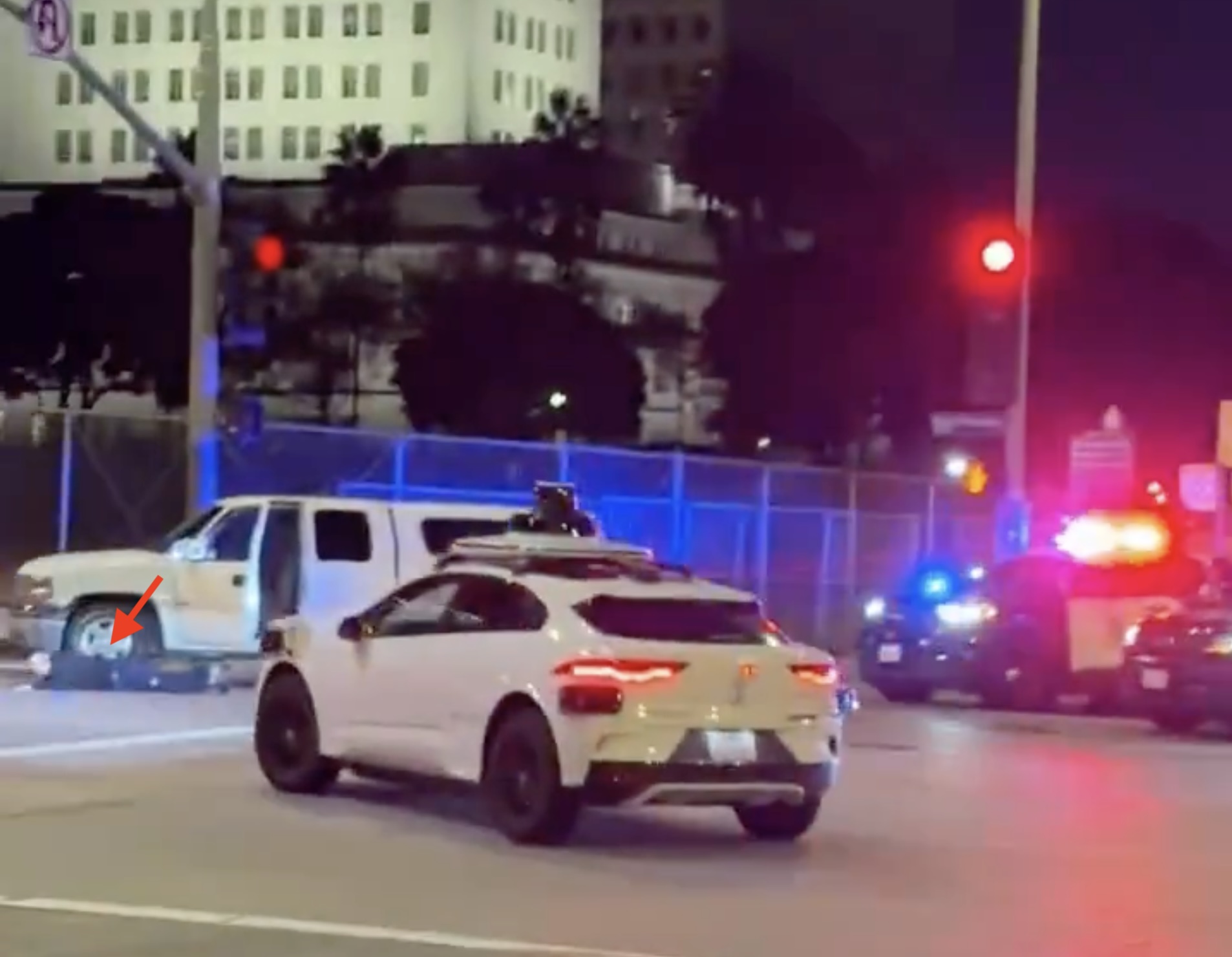
A video posted on social media has shown an occupied Waymo driverless taxi driving directly into the middle of an active LAPD standoff in downtown Los Angeles.
As could be seen in the short video, which was initially posted on Instagram by user Alex Choi, a Waymo driverless taxi drove directly into the middle of an active LAPD standoff in downtown Los Angeles.
The driverless taxi made an unprotected left turn despite what appeared to be a red light, briefly entering a police perimeter. At the time, officers seemed to be giving commands to a prone suspect on the ground, who looked quite surprised at the sudden presence of the driverless vehicle.
People on the sidewalk, including the person who was filming the video, could be heard chuckling at the Waymo’s strange behavior.
The Waymo reportedly cleared the area within seconds. No injuries occurred, and the passengers inside the vehicle were safely transported to their destination, as per a Waymo representative. Still, the video spread across social media, with numerous netizens poking fun at the gaffe.
Others also pointed out that such a gaffe would have resulted in widespread controversy had the vehicle involved been a Tesla on FSD. Tesla is constantly under scrutiny, with TSLA shorts and similar groups actively trying to put down the company’s FSD program.
A Tesla on FSD or Robotaxi accidentally driving into an active police standoff would likely cause lawsuits, nonstop media coverage, and calls for a worldwide ban, at the least.
This was one of the reasons why even minor traffic infractions committed by the company’s Robotaxis during their initial rollout in Austin received nationwide media attention. This particular Waymo incident, however, will likely not receive as much coverage.
News
Tesla Model Y demand in China is through the roof, new delivery dates show
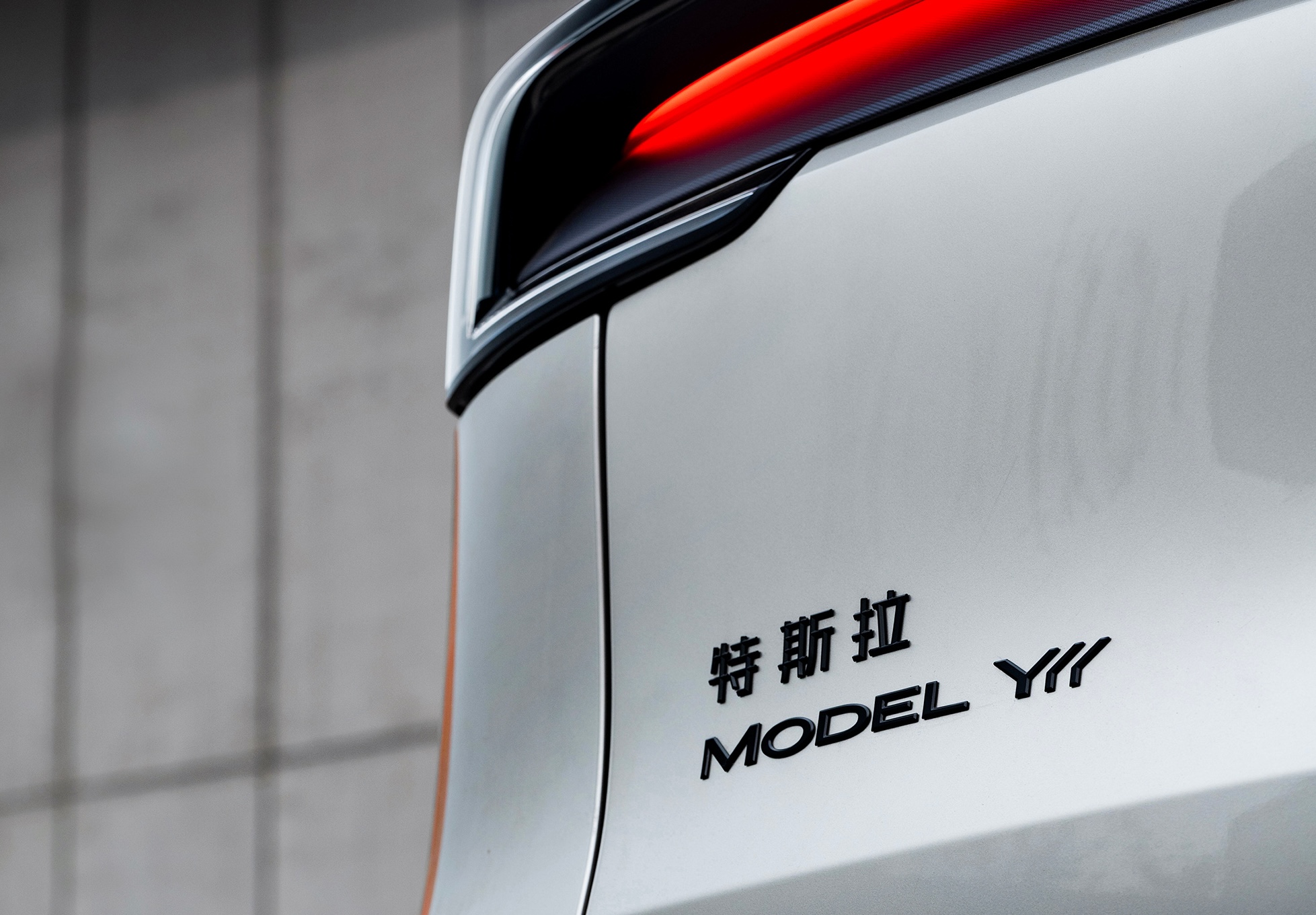
Tesla Model Y demand in China is through the roof, and new delivery dates show the company has already sold out its allocation of the all-electric crossover for 2025.
The Model Y has been the most popular vehicle in the world in both of the last two years, outpacing incredibly popular vehicles like the Toyota RAV 4. In China, the EV market is substantially more saturated, with more competitors than in any other market.
However, Tesla has been kind to the Chinese market, as it has launched trim levels for the Model Y in the country that are not available anywhere else. Demand has been strong for the Model Y in China; it ranks in the top 5 of all EVs in the country, trailing the BYD Seagull, Wuling Hongguang Mini EV, and the Geely Galaxy Xingyuan.
The other three models ahead of the Model Y are priced substantially lower.
Tesla is still dealing with strong demand for the Model Y, and the company is now pushing delivery dates to early 2026, meaning the vehicle is sold out for the year:
NEWS: New orders for all four Tesla Model Y trims in China are now officially sold out for 2025, as the factory’s remaining production capacity for the year has been fully allocated.
Estimated delivery dates for new orders now show January-February 2026. pic.twitter.com/Dfnu7yY58N
— Sawyer Merritt (@SawyerMerritt) December 1, 2025
Tesla experienced a 9.9 percent year-over-year rise in its China-made EV sales for November, meaning there is some serious potential for the automaker moving into next year despite increased competition.
There have been a lot of questions surrounding how Tesla would perform globally with more competition, but it seems to have a good grasp of various markets because of its vehicles, its charging infrastructure, and its Full Self-Driving (FSD) suite, which has been expanding to more countries as of late.
Tesla Model Y is still China’s best-selling premium EV through October
Tesla holds a dominating lead in the United States with EV registrations, and performs incredibly well in several European countries.
With demand in China looking strong, it will be interesting to see how the company ends the year in terms of global deliveries.
